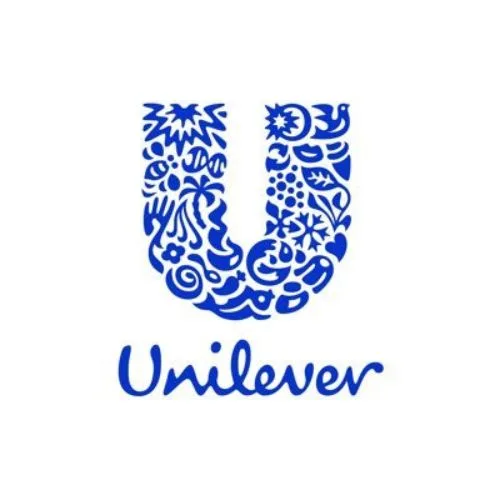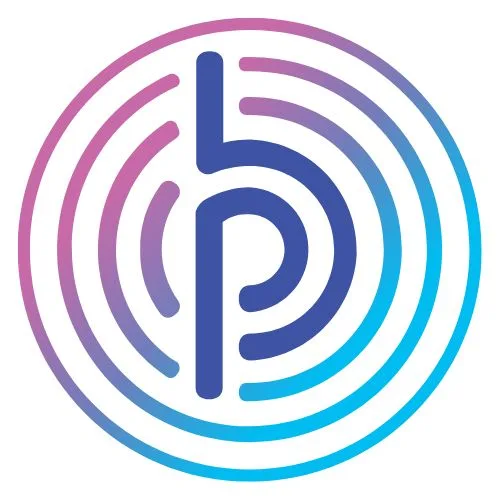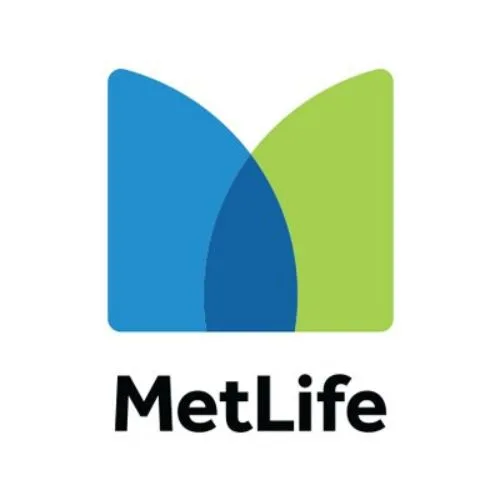- DISC Based Workshops
Team Building using DISC
Build Unstoppable Teams: DISC-Powered Team Dynamics, Brought to You by Synergogy.

People Trained
DISC Reports - Customer Service Version
Industry Sectors Covered
Companies using the highly acclaimed TTI Success Insights DISC Reports
Team Building Using DISC: Boost Your Team Performance
Team Building Using DISC is an immersive workshop designed to strengthen team cohesion and collaboration by mastering DISC profiling techniques. This workshop offers participants the tools to understand and appreciate the varied communication and behavioral styles within their team, as identified by DISC analysis. Throughout the workshop, attendees will engage in interactive exercises that focus on enhancing interpersonal communication, fostering trust, and building a strong team culture.
Course Content
Team Building Using DISC is a focused program designed to enhance team dynamics and collaboration by leveraging the principles of DISC profiling. This engaging workshop equips team members with the knowledge to recognize and appreciate the diverse behavioral styles and motivations within their team, fostering a more cohesive and productive working environment. Participants will gain insights into the communication preferences of their colleagues, allowing them to collaborate more effectively and resolve conflicts with greater ease. By the end of the workshop, participants will be better equipped to leverage the strengths of diverse team members, create a more inclusive and supportive team culture, and achieve synergistic results through improved team collaboration.
Introduction to DISC
Brief introduction of DISC and its history. Why DISC is essential to team success
DNA of DISC Assessment
Dominance, Influence, Steadiness & Compliance. The four key factors.
Self-Discovery using DISC
Discovering personal strengths and weaknesses using your own DISC profile.
DISC Team DNA Orientation
Understanding the DISC team insights, strengths and limitations of the team.
Inclusive Team Culture
Strategies to create an environment that respects & integrates all DISC styles.
Building Trust and Collaboration
Understanding and valuing the diverse DISC profiles within the team.
Team Strengths and Challenges
Identifying and maximizing the strengths of each DISC style in the team.
Post Training Action Planning
Developing personal action plans - applying DISC insights in team settings.
Who should attend?
- Team Leaders & Managers
- HR Business Partners
- Intact Teams
- Project Leaders
- OD Professionals
Key benefits
- Enhanced Communication
- Improved Team Dynamics
- Effective Conflict Resolution
- Increased Self-Awareness
- Better Hiring for Teams
Course methodology
- Instructor-led Facilitation
- Cohort Learning - Synergogy
- Case Work & Scenarios
- Interactive Real Play
- Personal Reflection and Action Planning
Course materials
- Personal & Team DISC Profile Report
- Participant Workbook
- Case Study Booklets & Handouts
- Ready Reckoner Laminates
- Personal Action Plan Template
Schedule a 30 minute call to discuss your needs.
Choose from a Range of customizations
Choose from a range of solutions to suit your every need. Our course can be customised to your industry or business unit context. What’s more, we are happy to deliver this course face to face or in virtual, instructor-led formats.
Other Courses Using DISC
Enhance EQ
Enhance your Emotional Intelligence (EQ) and interpersonal skills using the DISC framework, fostering self-awareness and empathetic connections.
First-Time Manager
For new managers, enhance leadership & team management skills using the DISC framework, fostering effective team management and productivity.
Sales Training
Elevate your sales effectiveness by integrating the DISC framework, honing your ability to understand diverse customer profiles and communicate persuasively.
Customer Service
Enhance your customer service skills by applying the DISC framework, enabling better understanding of customer behaviors & improving interaction quality.
Personal Development
Advance your personal development by utilizing the DISC framework to deepen self-understanding and enhance your interpersonal relationships.
Leadership Coaching
Foster personal growth by leveraging the DISC framework, enhancing self-awareness and interpersonal skills for holistic personal development.
Communication Skills
Improve your communication skills through the DISC framework, fostering clearer understanding and more effective interactions with others.
Conflict Management
Improve your conflict management skills through the DISC framework, Transform Conflict into Collaboration using proven methods.
Let’s talk about your big project
Write to us and let us know how we can help you with your talent needs at programs@synergogy.com
Frequently asked questions
Everything you need to know about Team Building Using DISC.
Team building is the systematic approach to fostering a cohesive unit of individuals who work collectively towards shared objectives. It encompasses a range of practices and experiences designed to strengthen relationships, enhance mutual understanding, and boost group efficacy. This process is crucial for cultivating an environment where communication thrives, trust grows, and team performance is maximized.
Team building is vital to establishing a cohesive and supportive work environment. It enhances communication, boosts morale, and increases productivity, fostering a team that works well together and is aligned with the company’s goals. Effective team building leads to a sense of unity, improved well-being, and better conflict resolution, which are crucial for a high-performing team. By embracing diversity and promoting adaptability, team building activities also play a key role in employee engagement and retention, contributing to the overall success of the organization.
Team building offers numerous benefits that enhance an organization’s functionality and success. It creates an open atmosphere for free information exchange and increases task engagement. Morale is improved, which positively affects the workplace atmosphere and accelerates new employee integration. It strengthens the team’s identity and fosters a robust corporate culture in line with company values.
Financially, it can lead to lower HR management costs.
Effective communication and collaboration are bolstered, laying the groundwork for trust and functional teamwork. Team building also streamlines conflict resolution for a more amicable environment and drives productivity by unifying team efforts. It harnesses individual strengths and addresses weaknesses, ensuring team goals align with the organizational mission.
Problem-solving skills are enhanced through shared insights, and employee engagement is boosted, resulting in higher job satisfaction and adaptability to change. Retention rates improve due to increased job satisfaction, while creativity and innovation lead to better solutions and ideas. Leadership qualities are nurtured within the team, creating pathways for professional growth and skill development. Lastly, team building improves decision-making quality through diverse perspectives, culminating in a high-performing team that not only meets but also exceeds expectations.
To effectively integrate team building activities into the workplace, start by assessing team dynamics to select appropriate exercises. Activities should be tailored to meet team objectives, with space for reflection to glean key insights. Initiating with icebreakers can promote openness, while regular meetings enhance communication.
Hosting workshops enhances skills and relationships, and leveraging virtual tools can engage remote teams. Encouraging cross-departmental projects breaks down silos, and introducing competitive yet cooperative challenges can energize the team. Celebrating collective achievements is essential for morale, and a dedicated team-building schedule ensures ongoing commitment.
Facilitating informal social interactions solidifies relationships, and combining learning programs with team building strengthens team cohesion. Gathering feedback is crucial for continuous improvement, and customizing activities to fit the team’s culture makes them more effective. Leadership participation is vital to demonstrate dedication and set a positive example for the team.
Team building can face several challenges, including resistance to change, which can impede progress. A lack of trust can restrict open communication and collaboration, while communication barriers may cause misunderstandings. The clash of diverse personalities and work styles requires careful management, and time constraints can limit team-building opportunities.
Without adequate leadership support, team-building efforts may flounder. Unclear goals or roles can lead to confusion, and poorly planned activities can result in ineffectiveness. Individualistic mindsets might clash with collective objectives, and negative past experiences can taint current dynamics. The absence of follow-up actions can diminish the long-term impact of team-building exercises.
Cultural differences can result in misalignment, and activities that focus solely on entertainment without substantive engagement can be ineffectual. Limited resources may constrain team-building initiatives, and remote work environments present distinct challenges in maintaining team cohesion. An overdependence on leaders can hinder team autonomy, while internal competition might undermine the spirit of collaboration. Unresolved philosophical differences can also obstruct the development of a shared vision. These hurdles necessitate strategic approaches to foster a cohesive and effective team.
Team leaders can cultivate a positive team culture by exemplifying the behaviors and values they wish to see, ensuring these are communicated clearly to the team. Open communication should be fostered for transparency and trust. Recognizing and celebrating achievements can motivate members, while a collaborative environment where every contribution is valued will enhance team spirit.
Providing opportunities for professional growth and clarifying roles will prevent confusion and promote development. Work-life balance is crucial for well-being and satisfaction, and addressing conflicts promptly ensures a healthy team dynamic. Building trust and respect is fundamental for a strong team foundation.
Encouraging innovation and valuing new ideas boost creativity. Creating a workspace that supports positive interactions, whether physical or virtual, and emphasizing inclusivity and diversity, enriches the team’s perspectives. Social interactions should be encouraged to strengthen bonds, and leaders must actively seek and respond to feedback, showing a commitment to responsiveness and adaptability.
Goal Setting and Role Assigning: Understand how to define objectives and distribute tasks effectively.
Communication Skills: Improve the ability to convey and interpret messages clearly.
Collaboration and Teamwork: Learn to work synergistically within diverse groups.
Problem-Solving Skills: Develop critical thinking to address complex challenges.
Leadership Skills: Gain abilities to guide, motivate, and inspire others.
Conflict Resolution: Acquire techniques to manage and resolve disputes amicably.
Time Management: Master the art of prioritizing tasks and managing time efficiently.
Adaptability and Flexibility: Learn to adjust to new conditions and alter course when necessary.
Decision-Making Skills: Enhance judgment to make informed choices swiftly.
Creativity and Innovation: Stimulate imaginative thinking and novel solutions.
Trust-Building: Forge stronger bonds based on reliability and integrity.
Networking and Relationship Building: Expand professional networks and deepen connections.
Negotiation Skills: Improve the ability to reach mutually beneficial agreements.
Resilience: Build capacity to recover quickly from setbacks.
Emotional Intelligence: Enhance awareness and management of one’s own emotions and those of others.
Strategic Thinking: Cultivate the ability to plan for the long-term and consider broader impacts.
Marshmallow Challenge: A hands-on activity that promotes creativity and problem-solving.
Team-building Workshops: Structured sessions aimed at developing specific teamwork skills.
Outdoor Adventure Activities: Engagements like ropes courses or hiking that encourage teamwork in a natural setting.
Problem-Solving Challenges: Tasks that require collective thinking to find solutions.
Team-building Games: Fun, interactive games that focus on enhancing team cooperation.
Scavenger Hunt: An exploratory game that can build collaboration and strategic thinking.
Team-building Retreats: Getaways that combine relaxation with team-enhancing exercises.
Board Games or Puzzle Challenges: Activities that require critical thinking and collaboration in a competitive setting.
Team-building Apps: Digital tools designed to improve team dynamics through interactive challenges.
Charity or Community Service Events: Activities that bond team members through giving back to the community.
Team-building Board Games: Games specifically designed to enhance team communication and strategy skills.
Team-building through Art: Creative sessions that use art to foster collaboration and innovation.
Team-building through Storytelling: Activities that use narrative to build empathy and communication within the team.
- For Smaller Teams: Schedule at least one activity every two months to build rapport and establish solid foundations.
- For Larger Teams: Organize smaller, goal-oriented events regularly, with a larger event semiannually or quarterly to celebrate and appreciate employees.
- Team Development Stage: New or evolving teams might require more frequent activities to aid in their transition. As teams mature, the frequency can decrease.
- Organizational Culture: In companies valuing collaboration highly, more frequent activities align with cultural expectations.
- Workload and Deadlines: Be cognizant of busy periods and opt for less disruptive activities during peak times.
- Feedback and Assessments: Use feedback to gauge the team’s pulse and plan activities accordingly.
- Strategic Initiatives: Align team-building efforts with key business challenges or goals, potentially increasing frequency when targeting specific issues.
- Seasonal or Annual Events: Utilize these occasions for team building to ensure regular engagement without additional scheduling burdens.
- Virtual Teams: Short, regular virtual activities can help remote teams maintain connection.
- Informal and Continuous: Embed team-building aspects in everyday interactions and meetings for ongoing benefits.
- Rotating Activities: Vary the activities to maintain interest and cater to different preferences.
- Seasonal Themes: Seasonally themed activities keep the approach fresh and timely.
- Budget Considerations: Balance costs with the benefits to find a sustainable frequency.
- Long-Term Goals: Regular activities should support the overarching objectives for team and organizational development.
Communication is a cornerstone of team building, serving as the foundation for trust. It ensures team members are comfortable sharing ideas, knowing they are in a secure environment. Clearly defined goals and expectations keep everyone aligned on objectives and roles, fostering a unified direction.
Effective communication drives collaboration, inviting collective problem-solving and cooperative efforts. It’s also crucial for resolving conflicts, allowing for open dialogue to address disagreements constructively. By inviting participation, communication makes each member feel integral to the team, thus encouraging engagement.
Regular, meaningful exchanges between team members strengthen relationships, while a transparent flow of information keeps everyone informed and in sync. Positive communication cultivates a constructive culture and helps manage negativity.
Acknowledging team contributions can significantly boost morale and motivation. As teams encounter change, communication is key to disseminating new information and facilitating smooth transitions. Keeping everyone informed ensures alignment with the team’s common goals. Feedback mechanisms supported by communication enable continuous improvement and personal development. Shared insights enhance decision-making, leading to more democratic and informed outcomes.
Proactive communication can preempt potential conflicts by preventing misunderstandings. Inclusivity in communication ensures all voices are heard, which enriches the team’s diversity. Finally, respectful communication fosters mutual understanding and appreciation, essential for a respectful and productive team environment.
Virtual teams can foster team building by leveraging technology to simulate a shared office experience. Video conferencing tools can facilitate face-to-face interactions for meetings and activities, helping to maintain personal connections. Remote-friendly games can inject fun and enhance collaboration, while online workshops offer opportunities for team development and skill-building in an interactive setting.
Collaborative project management software enables seamless teamwork and real-time project oversight, essential for remote teams to stay on track. Virtual social spaces, like online coffee breaks or lunch and learn sessions, can mimic the informal socializing of a physical workspace and are crucial for nurturing relationships beyond work discussions.
Encouraging team members to share personal successes and milestones helps build a sense of community and connectedness, reinforcing the team’s bond despite physical distances. These strategies help virtual teams cultivate a strong, cohesive, and collaborative culture akin to that of in-person teams.
Team building is pivotal in fostering an environment that enhances employee satisfaction and retention. It helps develop strong interpersonal relationships, creating a more united team spirit. Improved communication from team building activities leads to better collaboration and understanding among members.
These activities raise morale and motivation, as employees feel more valued and excited about their work. A sense of belonging is cultivated, giving employees a feeling of being integral to a collective mission. Recognition and appreciation received during team building make employees feel seen and valued for their efforts.
Active involvement in work and the team, spurred by team building, energizes the workplace and increases engagement. A supportive team can also offer a buffer against work-related stress. Team building reinforces alignment with company values, making employees more attuned to the organization’s mission and ethos.
Professional development opportunities within team building contribute to career growth and satisfaction. Conflict resolution skills are honed, leading to a more amicable workplace. Employee well-being is enhanced by a culture that supports both professional and personal life aspects.
Team building often promotes work-life balance, leading to healthier work habits. A positive organizational culture, developed through team building, can revolutionize the overall work experience. When employees feel a strong connection to their team and company, their job loyalty intensifies. Finally, the positive experiences and relationships fostered by team building activities directly result in increased job enjoyment.
To measure the effectiveness of team building, teams should establish specific, measurable objectives and gauge progress towards these goals. Feedback surveys, pre- and post-activity assessments can quantify the team’s perception of impact and skill development. Observations from both leaders and members offer qualitative insights into behavioral shifts. Key Performance Indicators (KPIs) related to team effectiveness, such as project delivery times and customer satisfaction, alongside team performance metrics, provide a quantifiable look at productivity and efficiency improvements.
Communication improvements can be evaluated through metrics on interaction frequency and quality. Employee engagement levels, monitored through dedicated surveys, can reveal the influence of team-building activities. Retention rates serve as an indirect indicator of team cohesion and satisfaction, while the depth and quality of work relationships can be assessed through feedback and social network analyses.
Changes in employee morale and the rate of task completion offer further insight into the team’s development. Leadership feedback on performance and dynamics, the sustainability of behavioral changes over time, and a financial analysis to determine the Return on Investment (ROI) complete a comprehensive evaluation of team-building success.
Still have questions?
Can’t find the answer you’re looking for? Please feel free to write to us.
Our Blog
Boosting Team Efficiency with DISC Profiles
Learn how to boost team efficiency with DISC Profiles. The DISC Team Profile offers you all you need to enhance your team's productivity.
Harnessing DISC Assessments for Enhanced Team Collaboration
Learn how to harness DISC assessments to enhance team collaboration with Synergogy's world class DISC based team building workshops.
What is BEI?
Our comprehensive guide unravels the nuances of BEI, from its foundational concepts to its practical application providing invaluable insights for HR professionals.
The Manager’s Guide to Mastering BEI Techniques
Discover the essentials of Behavioral Event Interviewing (BEI) in this in-depth guide, tailored for managers and HR professionals. Learn about crafting questions, integrating technology, and best practices to enhance talent acquisition and make informed hiring decisions.
Competency-Based Interviewing: An In-Depth Exploration into BEI
Dive into Behavioral Event Interviewing (BEI) and transform your hiring strategy. This guide introduces the essentials of crafting effective BEI questions and evaluating candidate responses, seamlessly integrating these methods into your talent acquisition process.
7 Proven Strategies for Managing Difficult Customers with DISC: Transforming Tensions into Triumph
Gaining insight into both personal and customer behaviours and preferences can be invaluable for customer service professional striving to provide exceptional service to challenging customers.
Building a Successful Succession Plan: A Step-by-Step Guide
Succession planning is a strategic process aimed at identifying and developing potential leaders within an organization who can replace key leaders when they leave, retire, or are unable to perform their duties. It involves nurturing high-potential employees for advancement, ensuring business continuity, and promoting a culture of talent development.
A Comprehensive Guide to Competency Mapping
Competency mapping is a strategic HR process used to identify and analyze the knowledge, skills, and behaviors needed to perform tasks efficiently and effectively within an organization. It aids in understanding the capabilities of current employees, thus facilitating informed decisions on recruitment, training, and performance evaluation.
The Comprehensive Guide to Creating Mission, Vision, and Values Statements
Crafting mission, vision, and values statements is an integral aspect of an organization's strategic planning process. These declarations provide a roadmap guiding the organization's decisions and actions, while also instilling a sense of purpose among its stakeholders
The Ultimate Guide to Organizational Development
Organizational development is a meticulously planned strategy. It cultivates growth and change within organizations, fostering the enhancement of organizational effectiveness and employee […]
Stepping Up: A Comprehensive Guide for First-Time Managers
The transition from a specialist or an individual contributor to the role of a manager is often filled with a mixture of excitement and apprehension. For many, it is the first step into the realm of leadership, offering a broader perspective of the organization and presenting an entirely new set of responsibilities. This voyage from being an individual player to becoming a first-time manager is as thrilling as it is profound.
Navigating Conflict: A Comprehensive Guide to Conflict Management
"Conflict is the gadfly of thought," so proclaimed the esteemed philosopher, Socrates. It stings and nudges us out of our complacency and comfort zones. In today's dynamic organizations, his wisdom resonates more than eve
Implementing a Mentorship Program: Ultimate Guide
A mentorship program can have a profound impact on organizations, promoting professional growth, fostering stronger relationships, and boosting employee satisfaction. This comprehensive guide offers a practical roadmap for organizations to establish and implement a successful mentorship program.
Job Evaluation Using Point Factor
Navigate through the realm of job evaluation by delving into the effective Point Factor Method. Discover how this method revolutionizes workplace productivity and enhances human resource management.
India’s Premier Design Thinking Certification Program – CDTP™
In a world consistently propelled by digital innovation, the realm of Design Thinking is becoming increasingly prominent. The torchbearer in this transformative journey, particularly in India, is the Synergogy Design Thinking Certification program. More than just an educational platform, Synergogy offers an unrivalled roadmap to a prosperous and burgeoning professional future.
Mastering Certified Competency-Based Interviewing Skills
In today's competitive job market, having strong interviewing skills is crucial for both job seekers and employers. To effectively assess candidates and make informed hiring decisions, organizations are increasingly adopting competency-based interviewing techniques. In this comprehensive guide, we will delve into the realm of certified competency-based interviewing skills, providing valuable insights, strategies, and tips to help you master this approach and excel in your hiring process.
Introduction to Interviewing Skills Training Certification
In the ever-evolving landscape of the modern workplace, companies need to adapt swiftly to keep up with the changing times. The traditional method of evaluating candidates based solely on their resumes and qualifications is no longer sufficient. It is the interviewing skills that hold the key to unlocking a candidate's true potential.
Mastering the Art of Interviewing Skills: A Comprehensive Guide
Whether you're looking to be the next Sherlock of recruitment or the Usain Bolt of job candidates, you've come to the right place. Strap yourself in and get ready for a whirlwind ride through the world of interviews, a dimension where everything you say or don't say can change your destiny.
Mastering CEO Succession Planning
In the fast-paced corporate world, CEO succession planning is not just a strategy, it's a necessity. The role of a CEO is pivotal in steering the organization towards success. However, the inevitability of change means that companies must be prepared for the day when their current leader steps down. This is where CEO succession planning comes into play. It ensures that there is a seamless transition of leadership, safeguarding the company’s vision, and maintaining its growth trajectory.
5 Simple Steps to Effective Problem Solving
The ability to solve problems is a crucial skill in the modern workplace. It can make the difference between success and failure, […]
Paving Your Path as a First-Time Manager: A Definitive Guide
Stepping into the world of management for the first time can often feel like venturing into a jungle without a compass. It’s a daunting landscape filled with challenges, expectations, and a new lexicon of ‘manager-speak’. But fear not! Here’s our comprehensive guide, sprinkled with a little wisdom from seasoned managers and some hard-learned lessons, to help you navigate your journey with confidence.
6 Leaders Share Their Insights on Diversity, Equity, and Inclusion
In this article, we interview six leaders from various industries to hear their thoughts on how to create a more inclusive workplace […]
How to develop an agile culture for startups?
The new role of Learning & Development in the post-pandemic era. COVID-19 has forced companies to re-image how L&D should function.
5 Mistakes to avoid while hiring internationally
The new role of Learning & Development in the post-pandemic era. COVID-19 has forced companies to re-image how L&D should function.
Creating a blueprint for organizational mental health
The new role of Learning & Development in the post-pandemic era. COVID-19 has forced companies to re-image how L&D should function.
BEI Certification Program
The Certified BEI Practitioner (C-BeiP)™ accreditation is a 8-hour BEI Certification Program. This interviewing skills certification program is endorsed by Human Resource Certification Institute (HRCI) for 8 Hours of continuing education units.
A Retro Look at Learning & Development: Preparing for the Future
The new role of Learning & Development in the post-pandemic era. COVID-19 has forced companies to re-image how L&D should function.
Self Regulation
Building your emotional intelligence by improving self regulation is one of the most difficult part of improving your Emotional Quotient.
Online DISC Certification – New Zealand
Master DISC application! Learn from the company that first computerised DISC in 1984.
Online DISC Certification – Melbourne
Master DISC application! Learn from the company that first computerised DISC in 1984.
Online DISC Certification – Brisbane
Master DISC application! Learn from the company that first computerised DISC in 1984.
Online DISC Certification – Sydney
Master DISC application! Learn from the company that first computerised DISC in 1984.




















